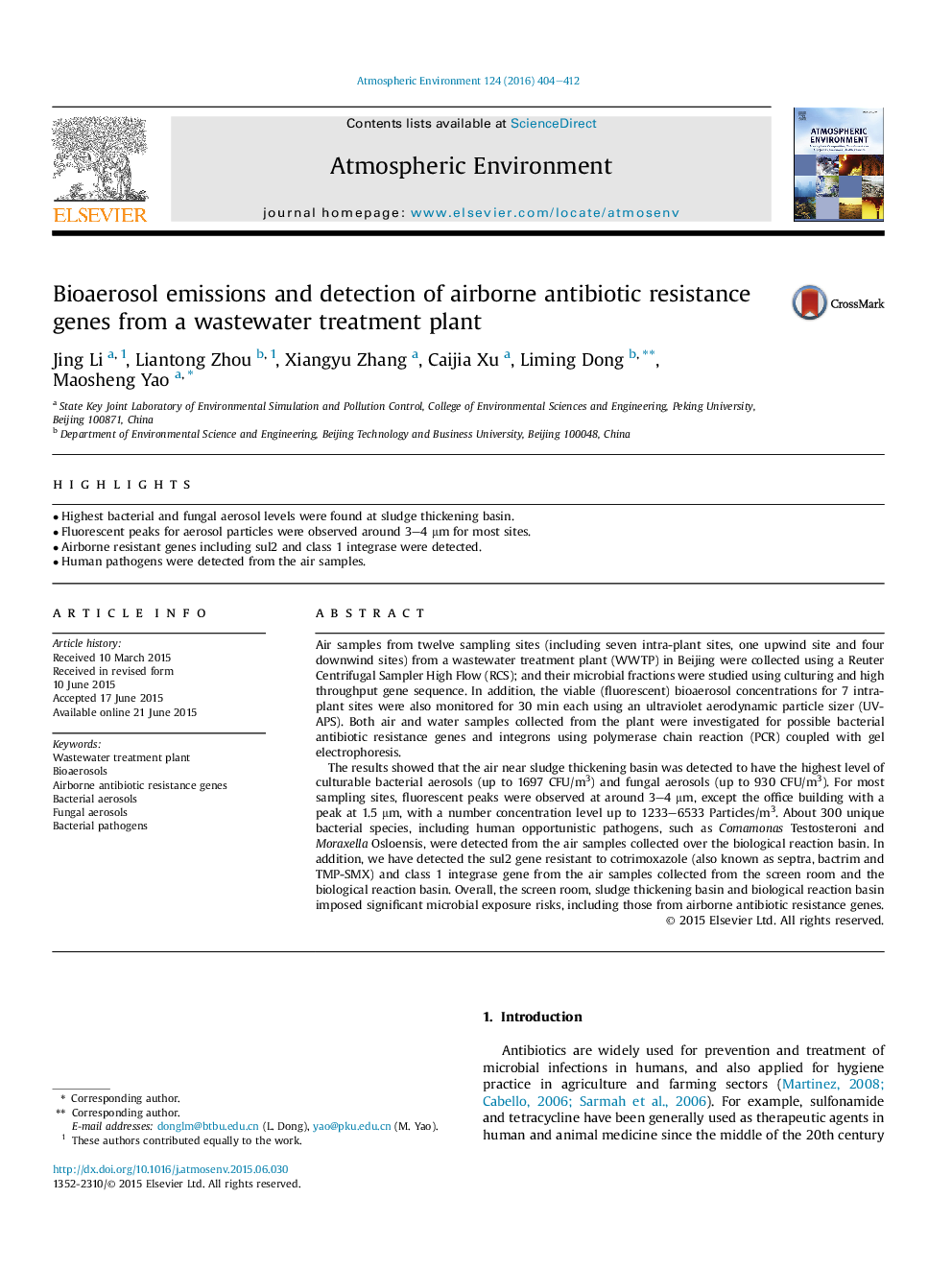| کد مقاله | کد نشریه | سال انتشار | مقاله انگلیسی | نسخه تمام متن |
|---|---|---|---|---|
| 6337495 | 1310936 | 2016 | 9 صفحه PDF | دانلود رایگان |
- Highest bacterial and fungal aerosol levels were found at sludge thickening basin.
- Fluorescent peaks for aerosol particles were observed around 3-4 μm for most sites.
- Airborne resistant genes including sul2 and class 1 integrase were detected.
- Human pathogens were detected from the air samples.
Air samples from twelve sampling sites (including seven intra-plant sites, one upwind site and four downwind sites) from a wastewater treatment plant (WWTP) in Beijing were collected using a Reuter Centrifugal Sampler High Flow (RCS); and their microbial fractions were studied using culturing and high throughput gene sequence. In addition, the viable (fluorescent) bioaerosol concentrations for 7 intra-plant sites were also monitored for 30 min each using an ultraviolet aerodynamic particle sizer (UV-APS). Both air and water samples collected from the plant were investigated for possible bacterial antibiotic resistance genes and integrons using polymerase chain reaction (PCR) coupled with gel electrophoresis.The results showed that the air near sludge thickening basin was detected to have the highest level of culturable bacterial aerosols (up to 1697 CFU/m3) and fungal aerosols (up to 930 CFU/m3). For most sampling sites, fluorescent peaks were observed at around 3-4 μm, except the office building with a peak at 1.5 μm, with a number concentration level up to 1233-6533 Particles/m3. About 300 unique bacterial species, including human opportunistic pathogens, such as Comamonas Testosteroni and Moraxella Osloensis, were detected from the air samples collected over the biological reaction basin. In addition, we have detected the sul2 gene resistant to cotrimoxazole (also known as septra, bactrim and TMP-SMX) and class 1 integrase gene from the air samples collected from the screen room and the biological reaction basin. Overall, the screen room, sludge thickening basin and biological reaction basin imposed significant microbial exposure risks, including those from airborne antibiotic resistance genes.
Journal: Atmospheric Environment - Volume 124, Part B, January 2016, Pages 404-412
